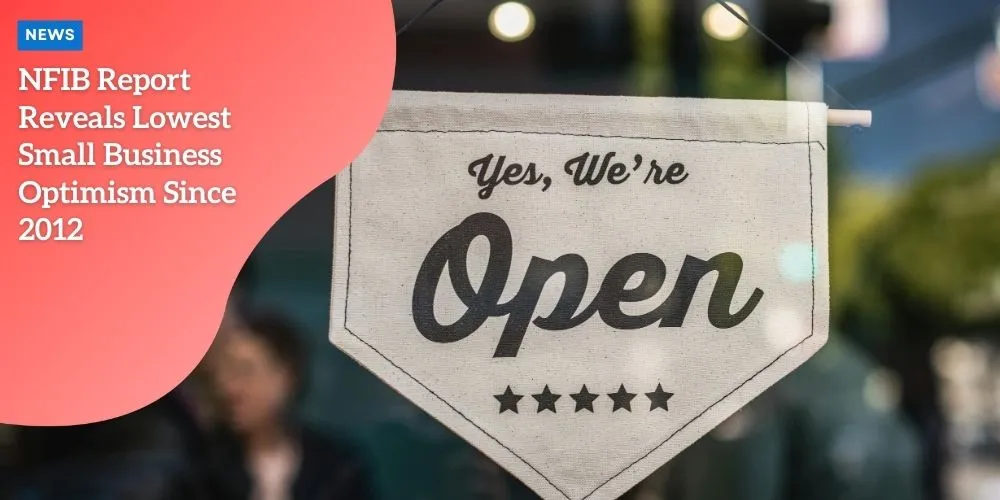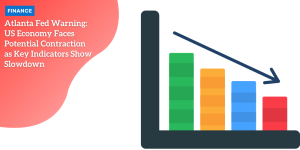NFIB Report Reveals Lowest Small Business Optimism Since 2012

Small Business Blues: Inflation, Labor Woes, and the Road Ahead
A recent report from the National Federation of Independent Businesses (NFIB) paints a concerning picture for America’s small businesses.
Anúncios
The NFIB Small Business Optimism Index, a key barometer of small business sentiment, recorded its lowest point in over a decade in March, marking a significant decline in confidence among this vital sector of the economy.
Small businesses, which represent a critical backbone of the U.S. economy, are facing a perfect storm of rising inflation, labor shortages, and tightening financial conditions, all of which combine to create a turbulent environment that threatens their sustainability and future growth.
Optimism Wanes: A 27-Month Downturn
The NFIB’s index, compiled through monthly surveys of small business owners, fell by 0.9 points in March, settling at a concerning 88.5.
Anúncios
This represents the lowest reading since December 2012, extending a worrying trend of 27 consecutive months where the index has fallen below the historical 50-year average of 98.
This prolonged period of declining optimism highlights the significant economic headwinds currently facing small businesses.
Over the past two years, small business owners have had to grapple with fluctuating supply chains, uncertain consumer demand, and a fast-evolving economic landscape that has left many uncertain about their ability to survive and thrive.
Anúncios
Inflation, which had been subdued for many years, has reared its head as a significant threat to the stability of small businesses.
This report, combined with recent trends, illustrates that small business owners are deeply concerned about the rising costs of goods and services and their ability to keep up with the economic pressures.
The toll that inflation takes on the bottom line is a real and present danger, as many small businesses operate on slim profit margins, leaving little room for error or significant price hikes.
Inflation: The Looming Threat
NFIB Chief Economist Bill Dunkelberg identified ongoing economic challenges as the primary culprit behind the decline in small business optimism.
Inflation has re-emerged as a top concern, posing a significant threat to the profitability and stability of many small businesses.
Dunkelberg noted the increasing difficulty of managing rising costs, with both input costs (materials) and labor costs experiencing significant inflation.
The report revealed that a quarter of all small business owners now cite inflation as their most significant operational challenge, a concerning 2-percentage-point increase from February and a 1-percentage-point rise compared to the previous year.
The inflationary pressures are compounded by the challenges in supply chains, which continue to face disruptions and cost increases.
Small businesses, particularly those in manufacturing and retail, find themselves in a constant struggle to maintain their inventory while managing rising input costs, from raw materials to transportation fees.
In some cases, these increases are unsustainable for small businesses that have to pass them on to customers or absorb them within their own operations.
As a result, many small businesses are being forced to make difficult decisions, such as raising their prices or cutting back on services, both of which risk alienating their customer base or eroding their competitive advantage.
Price Hikes and Labor Market Squeeze
In response to rising costs, a growing number of small businesses are being forced to raise prices.
The report revealed a significant increase (7 points on a seasonally adjusted basis) in the proportion of owners reporting raised average selling prices, reaching a net 28%.
This indicates that price hikes are becoming a common strategy for businesses to maintain profitability in the face of rising input costs.
However, these price increases may not be enough to offset the full impact of inflation, and in some cases, they could alienate customers who are already feeling the pinch of higher prices across the economy.
Beyond inflation, the labor market also presents challenges for small businesses.
While the report indicated a marginal easing in the overall labor market tightness, concerns regarding labor availability and quality persist.
Small businesses often lack the resources to compete with larger corporations when it comes to attracting top talent, leading to a widening gap between labor supply and demand.
Only a net negative 18% of small business owners anticipate real sales to rise in the coming months, reflecting a subdued sales outlook.
Furthermore, 37% of small businesses reported having unfilled job openings, highlighting the ongoing difficulty in securing qualified personnel.
Labor quality concerns also remain elevated, with 18% of owners identifying it as their top operational concern, marking a 2-point rise from the previous month.
The Talent Retention Game: Compensation on the Rise
Faced with a tight labor market, many small businesses are increasing compensation to attract and retain talent.
The report showed a 3-point increase in the percentage of small business owners reporting raising compensation compared to February, with 38% now offering higher wages.
This trend underscores the growing importance of attracting and retaining a skilled workforce, which has become one of the most pressing concerns for small businesses.
With the competition for talent becoming fiercer, small businesses are having to be more creative and flexible in their compensation strategies.
Some small businesses are offering additional benefits, such as flexible work schedules or bonuses, to make themselves more attractive to potential employees.
Others are increasing their reliance on automation and technology to reduce the need for manual labor and streamline operations.
However, these strategies come with their own set of challenges, as the cost of technology and automation can be prohibitive for many small businesses, particularly those with limited financial resources.
Looking ahead, a net 21% of owners anticipate additional compensation increases in the next three months, signifying a growing focus on attracting and retaining qualified workers.
While wage increases may provide some short-term relief, they also contribute to the broader inflationary pressures that businesses must contend with, creating a vicious cycle where rising costs and labor shortages continue to fuel each other.
The Fed’s Tightening Grip: Higher Rates and Loan Challenges
The Federal Reserve’s response to inflation is further complicating the economic landscape for small businesses.
The NFIB report acknowledges the Fed’s shift in rhetoric, with a move away from potential rate cuts and a stronger emphasis on curbing inflation.
This shift towards higher interest rates has made it more challenging for small businesses to access capital.
A net 8% of respondents reported increased difficulty in securing loans compared to previous periods, while a net 17% experienced higher interest rates on their most recent loans.
These financing challenges add another layer of complexity for small businesses already grappling with inflation and labor market constraints.
Higher interest rates increase the cost of borrowing, making it more difficult for small businesses to finance their growth or manage cash flow.
Many small businesses rely on loans to cover operational costs, purchase inventory, or invest in capital improvements.
However, with borrowing costs rising, many small business owners are facing a stark choice: take on more expensive debt or scale back their operations and growth plans.
The uncertainty surrounding interest rates, combined with inflation and labor issues, is leaving small businesses with little room to maneuver.
Economic Projections and the Job Market: A Murky Outlook
The NFIB report also highlights a significant decrease in anticipated rate cuts for 2024, suggesting a shift in economic projections by small business owners.
Despite a seemingly robust job market report revealing an increase of 303,000 jobs in March, concerns regarding data accuracy and the source of job growth persist.
A significant portion of this job growth stemmed from the public sector, primarily at the local level, raising questions about its sustainability for the broader economy.
The private sector, which is the primary engine of job creation, has seen slower growth, raising concerns about the long-term stability of the labor market.
While some small business owners remain hopeful that conditions will improve, the overall economic outlook remains uncertain.
The combination of persistent inflation, a tight labor market, rising interest rates, and supply chain disruptions creates an environment of volatility and unpredictability.
In such a climate, many small businesses are focused on surviving rather than thriving, prioritizing short-term stability over long-term growth.
Conclusion: Navigating Uncertainty with Resilience
The NFIB report paints a concerning picture for America’s small businesses.
Declining optimism, persistent inflation, and labor market challenges are creating a complex economic landscape.
As uncertainties persist, navigating these challenges will require resilience, strategic adaptation, and a continued focus on core business fundamentals from small business owners.
Government policies and initiatives that address inflation and support small business access to capital can also play a vital role.
While the road ahead may be fraught with obstacles, the resilience of small business owners is a testament to their ability to adapt, innovate, and persevere in the face of adversity.
The coming months will test their resolve, but with the right support and resources, America’s small businesses can continue to play a crucial role in driving the economy forward.





